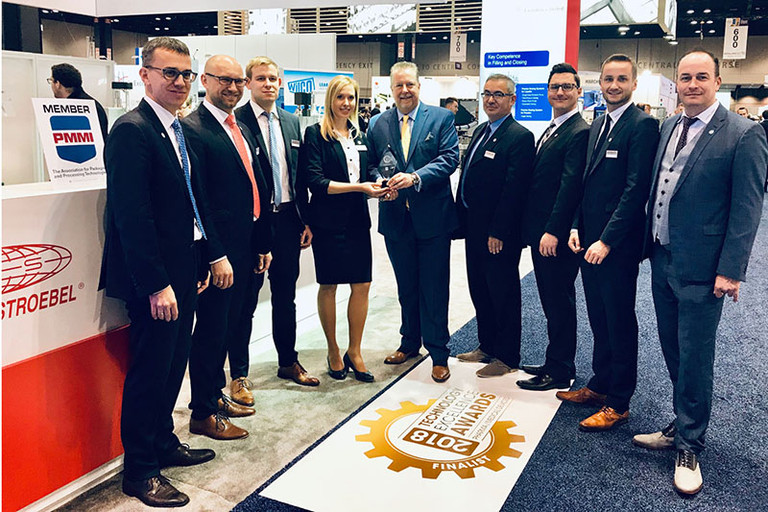Technology Excellence Award
Veröffentlicht: 10/17/18

The special machine manufacturer located at Ilshofen/Germany can look back on a long and successful story of innovations. For quite some time, Bausch+Ströbel has been taking an entirely new approach to external cleaning of vials and other packaging materials. Instead of the usual mix of water and cleaning solution, a new CO2 Snow Jet Cleaning process is now used for cleaning the exterior of containers.
This new process turned out to be convincing to the international trade visitors who took part in the online vote for the Pack Expo awards.
CO2 Snow Jet Cleaning systems use solid CO2 ice crystals as a jet medium. With its combination of mechanical, thermal and chemical properties, CO2 snow is able to gently detach and remove a whole variety of surface contamination.
This offers huge advantages over the conventional cleaning method: Using CO2 is especially friendly to the environment. Water-based cleaning methods consume 500 to 1000 liters of water per hour. Dispoasing of the water used for removing highly active or toxic substances from the outer surface of containers is complicated and expensive. Pharmaceutical companies do not only have less waste to dispose of, they also have less expenditures for safety measures.
Cleaning with this new method is much more efficient, especially when it comes to removing toxic or highly active substances.
Detailed description of the process:
The CO2 snow jet cleaning process utilizes liquid carbon dioxide, which is discharged from a two-component nozzle and expands under atmospheric pressure to form ice crystals (solidification). These crystals impinge at high velocity on the surface of the material to be cleaned, where they change from a solid state to a gaseous state (sublimation).
This process is non-abrasive and, therefore, does not alter the surface structure of the container being cleaned.
Developed at Fraunhofer IPA in Stuttgart, Germany, the sublimation-impulse technique is the most efficient process to date for cleaning with CO2 snow worldwide.
For instance, it is a very efficient way of removing adherent particles from the outer surface of containers after the lyophilization process, but before labeling.
It also has benefits when used upstream from particle testing stations: removing particles from the outer glass walls of containers means far fewer false alarms due to misidentification of exterior particles as interior particles.
CO2 Snow Jet Cleaning produces better cleaning results than water-based methods, and there is no risk of liquid collecting under the flip-off caps of vials. Moreover, there is no need for the drying process otherwise necessary after cleaning containers with water.
Further benefits include waste reduction. Water-based cleaning methods consume 500 to 1000 liters of water per hour. Disposal of the water used for removing highly active or toxic substances from the outer surface of containers is complicated and expensive. In the CO2 Snow Jet Cleaning process the CO2 is simply extracted together with the separated particles and filtered. The only part which needs replacing is the filter.
In addition to reduced waste disposal, this also means less expenditure on safety measures. There are, for example, no lines that have to be checked for leaks on a regular basis.
The process has already proven its effectiveness in areas such as the automobile sector, where, for instance, it is used for cleaning carbon parts prior to painting.
The engineers at Bausch+Ströbel were quick to identify the potential applications of this process in the pharmaceuticals sector, too.
